Square_peg
Gold Member
- Joined
- Feb 1, 2012
- Messages
- 13,853
The inside of the hook may have been thinned by abrasion in work. Not a typical wear pattern but we don't know what it was used for.
The BladeForums.com 2024 Traditional Knife is available! Price is $250 ea (shipped within CONUS).
Order here: https://www.bladeforums.com/help/2024-traditional/
Yeah, if your look at the image above it's clear that the weak spot is the ring and the eye it's attached to. The ring will have been forge welded and there's always the possibiity of a weak weld. And there's something going on at the businees end (load bearing end) of the eye. It almost looks like the poll socket was an afterthought and forge welded on later. This may have weakened the eye.
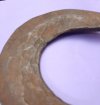
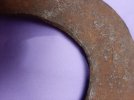
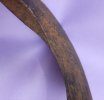
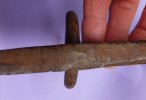
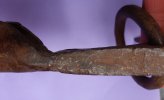
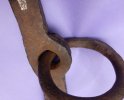
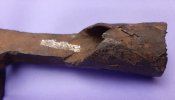
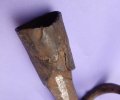
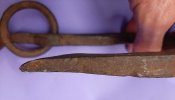
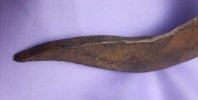
Yes, a Maasdam 3/4 ton with 100 ft rope. It was a good investment. T-ADo you use Maasdam rope puller?


I pictured you a little older!?Great tool.
Be careful, falling a tree against it's lean by pulling from high on the tree is a lot more dangerous than wedging against the lean. You increase the chances of barberchair or slabbing.
True, it might have been very functional for a task that is/was very unusual or even unique. I can buy that. But, if that's the case, we might never know the truth, and that is a very unsettling thought. Inquiring minds...Moreover,it could've been custom-forged for a situation that is no more...
The last time I had to pull on a tree I was cutting, it was already on the ground, but its many branches arching up high in the air made it difficult and dangerous to cut up. I didn't get a before pic, but here's what's left:I have lots more to share

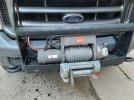
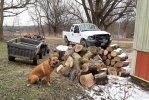
The tree on the ground with the dog on it is a white oak, which is really good firewood. better than red oak.
Maybe an old tree limb shear of sorts? Pole used to position the tool with a rope tied to the ring, and then the blade pulled down through the limb by pulling the rope?
I pictured you a little older!?
HOWEVER, for other pulling uses, I have a wyeth-scott more power puller and that thing is a hoss!! and the amsteel blue cable is so much better than the horrible wound steel cable that's always sending little cut wire strands into your hands.
